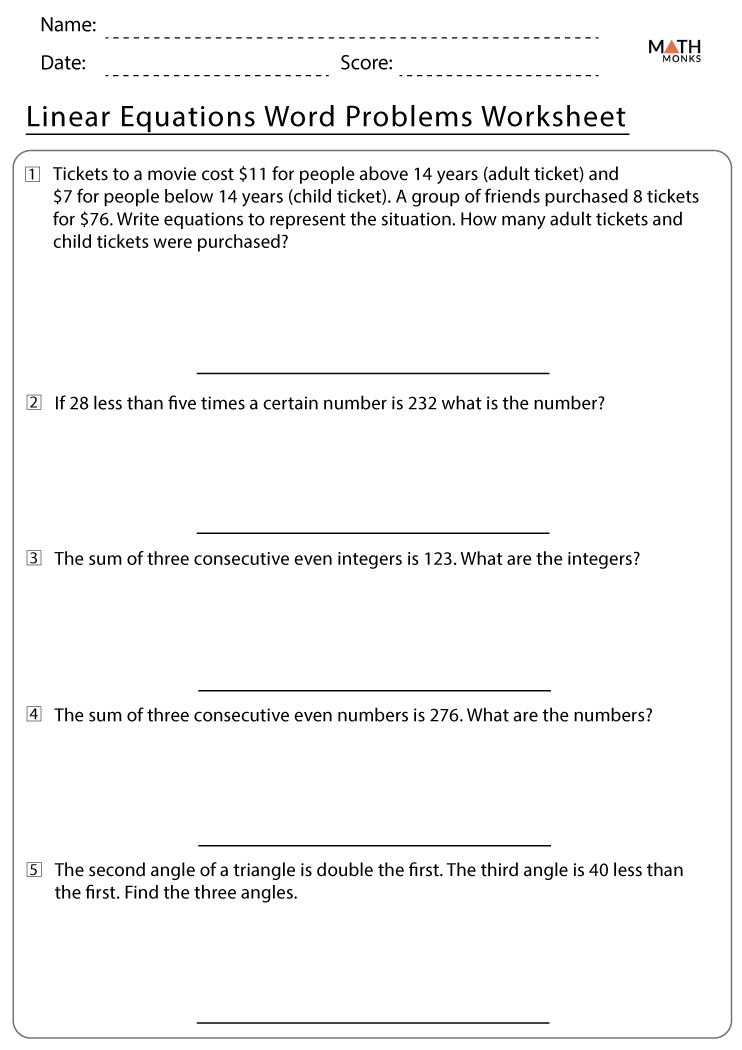Word problems are a common way to test students’ understanding of mathematical concepts. One important skill that students need to develop is the ability to create equations from word problems. This skill is essential for solving a wide range of mathematical problems and is a key component of algebraic thinking.
When creating equations from word problems, it is important to carefully read the problem and identify the key information. This may involve identifying variables, constants, and relationships between different quantities. Once the key information has been identified, students can use this information to create an equation that represents the problem.
For example, consider the following word problem: “Sara has twice as many apples as John. If John has 5 apples, how many apples does Sara have?” In this problem, the key information is that Sara has twice as many apples as John and that John has 5 apples. To create an equation, we can let the variable x represent the number of apples John has and the variable y represent the number of apples Sara has. The equation can then be written as y = 2x.
Another important skill when creating equations from word problems is to translate the problem into mathematical language accurately. This involves understanding the relationship between the different quantities in the problem and representing this relationship using mathematical symbols and operations. Practice is key to developing this skill, and worksheets that provide a variety of word problems can help students hone their equation-writing abilities.
Students can also benefit from working collaboratively on creating equations from word problems. This allows them to discuss different approaches to solving the same problem and to learn from each other’s strategies. By sharing their thought processes and reasoning, students can deepen their understanding of mathematical concepts and strengthen their problem-solving skills.
In conclusion, creating equations from word problems is an essential skill for students to master in mathematics. By carefully reading and analyzing word problems, identifying key information, and translating this information into mathematical language, students can develop their algebraic thinking and problem-solving abilities. With practice and collaboration, students can become more proficient at creating equations from word problems and solving a wide range of mathematical challenges.
